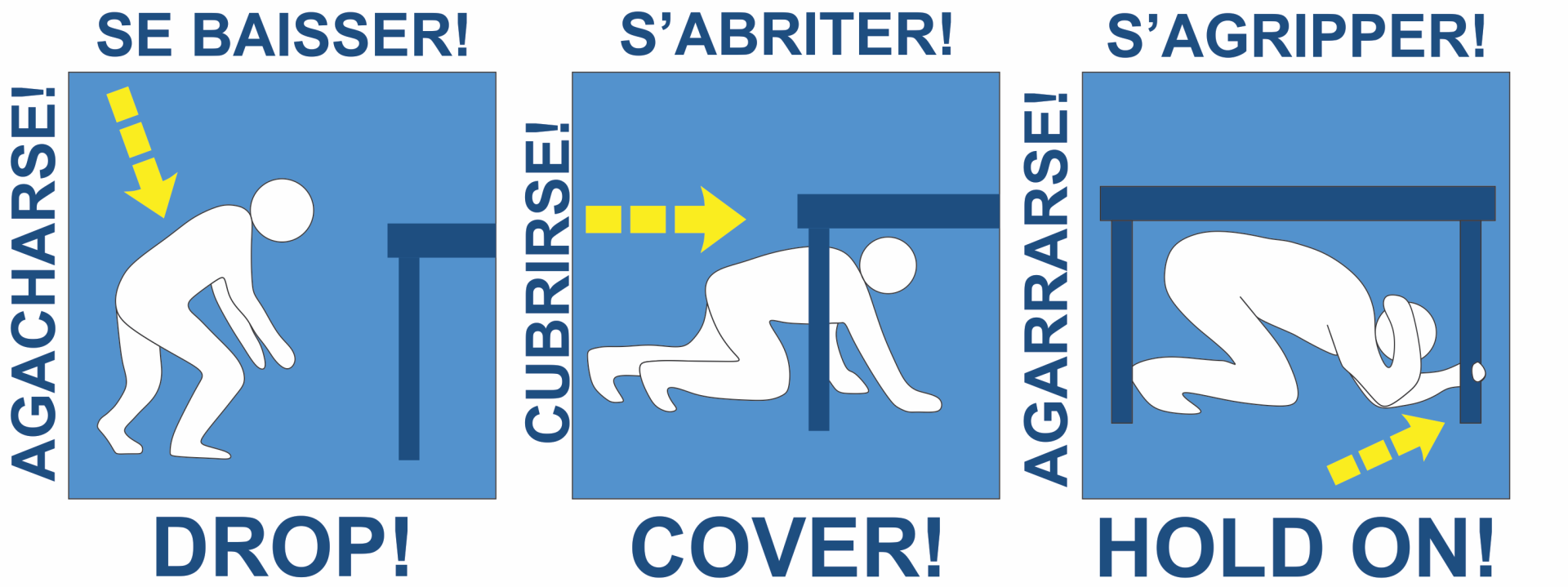What to do during an Earthquake
While Quaketek focuses on preparing for earthquake, a crucial element in surviving one, is how you react during the shaking. The best thing to do during an earthquake is to drop to the ground, take cover under a sturdy table or desk and hold on. If you can’t get under something sturdy (not a doorway) drop to the ground and protect your head and neck with your arms.
Drop
Drop to the ground as soon as the shaking begins. If you are in bed or inside a car, stay where you are. If you are in a wheelchair, Lock!
Cover
Take cover under a sturdy table, chair or if not possible cover your head to protect against falling objects. If you have a book, binder or tray in your hands and can’t get to cover use it.
Hold on
Hold on tight so as to ensure you stay under cover and aren’t knocked over.
Evacuate
You must evacuate the building as soon as the shaking stops in buildings designed to dissipate with ductility.
Preparing for an Earthquake
There are numerous resources explaining how to prepare for an earthquake and we’ve compiled a list of some of the best tips.
-
Have a plan. This includes how to communicate with loved ones after the shaking stops.
-
Practice, Practice, Practice. Do earthquake drills with your family and coworkers. This will help identify safe locations for cover when the shaking starts.
-
Secure loose items
-
Store supplies such as water, non-perishable food and a copy of important documents
-
Communicate with local authorities to find out what local plans and programs exist
-
Find out how safe your home workplace/school is. Older buildings may pose a greater hazard and newer buildings are built to different criteria depending on their usage.
- Most buildings are not designed to stay operational after an earthquake. Check with your building manager or the structural engineer of record to find out how prepared your building is.
-
Read and learn more! there are many great resources online, try to learn from government pages and check sources as there is a lot of poor or misleading information out there! www.ready.gov/earthquakes is a great resource as is earthquakecountry.org
After an Earthquake
-
Look for a clear path to safety, if there is one leave the building or area and go to an open space away from possibly damaged buildings and infrastructure.
-
If there is a lot of dust and debris, cover your nose and mouth with a clean cloth or bit of clothing and use it as a dust mask.
-
If you are pinned down, stay calm. Try not to kick up more dust and debris. If your phone works call for help, else, find a way to make noise and signal to rescuers.
-
Be ready to take cover again in case of aftershocks.
-
Communicate with loved ones and alert authorities. It can be hazardous to enter damaged structures.

